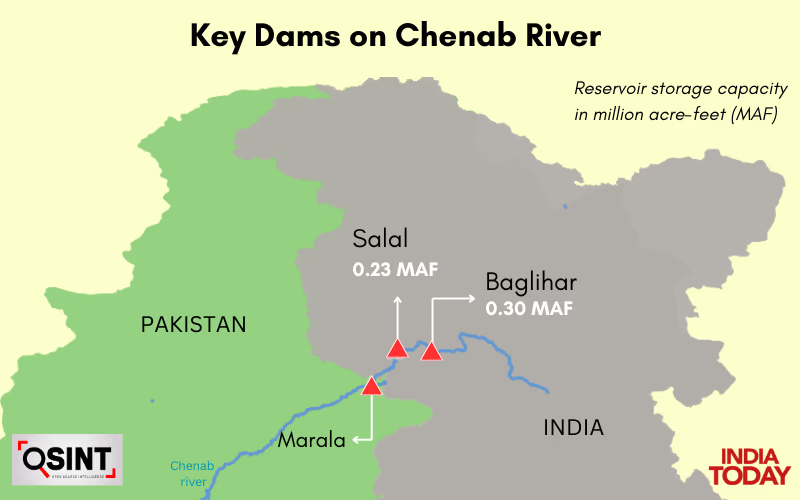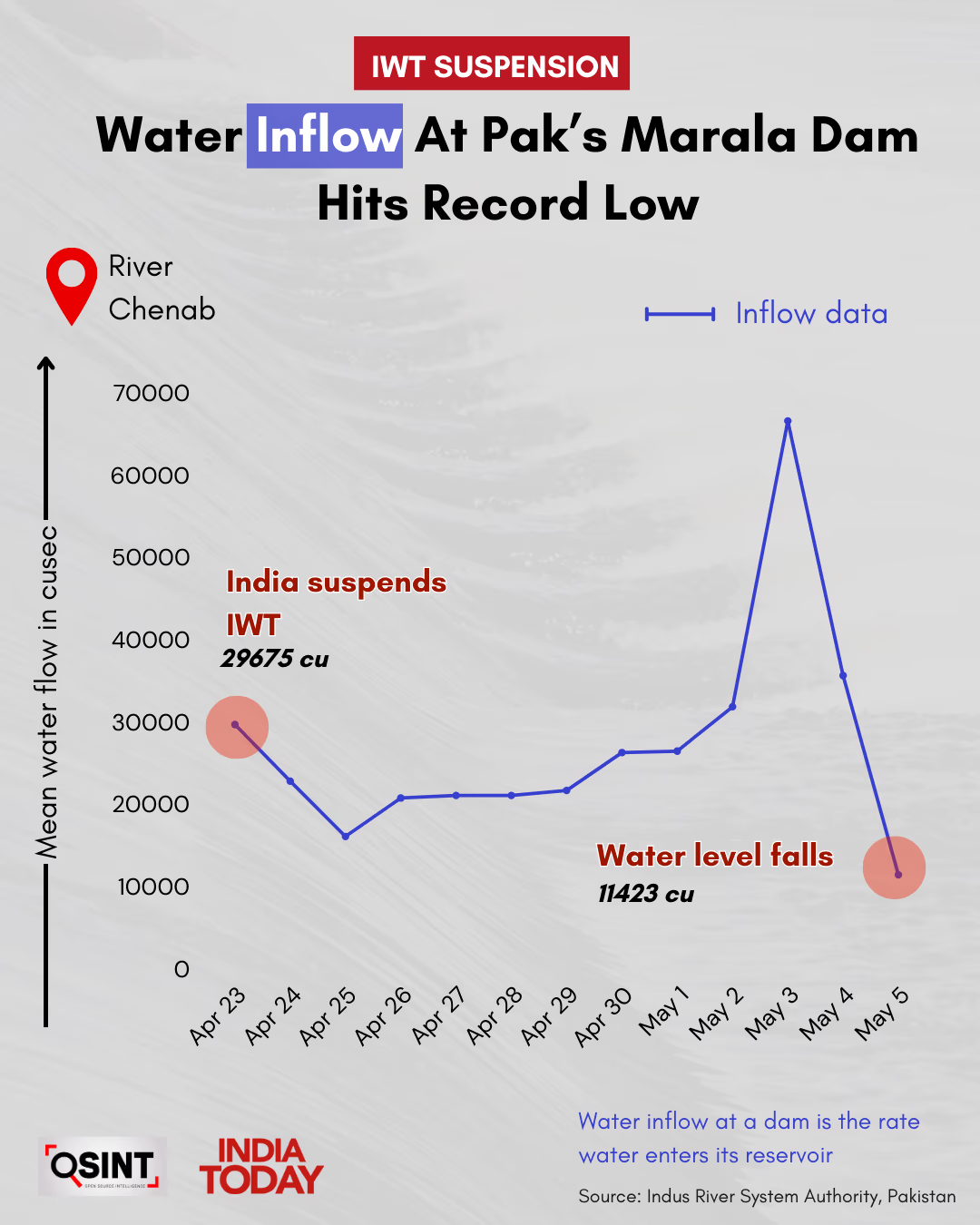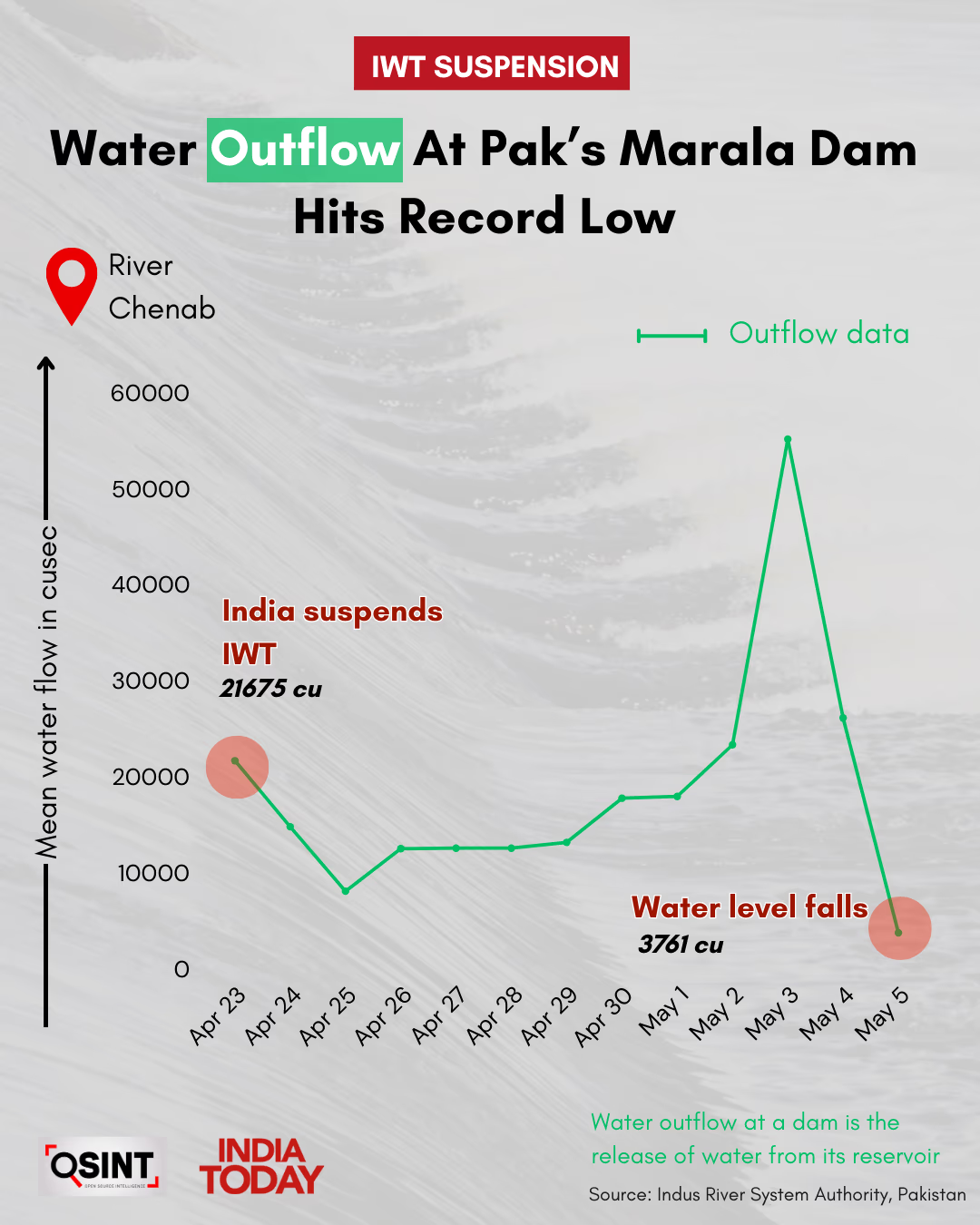India has commenced halting water flow to Pakistan following the suspension of the Indus Waters Treaty. Closing the gates of two dams has resulted in the Chenab River in Pakistan reaching its lowest level in a month. This situation is expected to persist for the coming days, potentially causing significant impacts on the neighboring nation.
India Shuts Gates of Two Dams
The gates of the Salal and Baglihar hydroelectric projects, located approximately 78 kilometers apart, were closed on Sunday for routine cleaning of silt and debris, a task usually performed during the monsoon in August, causing temporary river swelling downstream in Pakistan.

Source: aajtak
Silt removal and refilling the dams is a regular practice typically done in the monsoon season. However, due to the response to the Pahalgam attack, India proceeded with suspending the Indus Waters Treaty (IWT) ahead of schedule this year.

Source: aajtak
By design, the Salal and Baglihar dams are incapable of storing large quantities of water due to restrictions under the Indus Waters Treaty. According to data from Pakistan's Indus River System Authority (IRSA), there has been a dramatic drop in water flow from 29,675 cusecs on April 23 to 11,423 cusecs by May 5, marking a 61% reduction. Flow is defined by the quantity of water entering the dam reservoir at any given time.

Source: aajtak
Decrease in Water Outflow
Similarly, data shows an 83% decrease in water outflow by May 5, with figures dropping from 21,675 cusecs to just 3,761 cusecs. Outflow refers to the volume of water released through the dam reservoir. Under medium-flow conditions, the reservoirs at Salal and Baglihar can hold water for approximately 4 days, extending to 16 days when the flow diminishes.
Sindhu water agreement grants Pakistan exclusive rights over Chenab, Jhelum, and Indus waters, while India can use it for electricity generation and irrigation to avoid affecting downstream flow.
Threat of Agricultural Crisis in Pakistan
Muhammad Khalid Idris Rana, spokesperson for Pakistan's Indus River System Authority, informed Bloomberg that the water flow entering Chenab from India has reduced by nearly 90% since Sunday morning. He cautioned that if this cut in water flow continues, Pakistan might be compelled to reduce water supply to its fields by up to 20%.
According to a Reuters report, the Indian government has directed various agencies to expedite work on the Pakal Dul, Kiru, Kwar, and Ratle hydroelectric projects on the Chenab River. An assessment by the International Union for Conservation of Nature (IUCN) suggests that once completed, these dams will greatly enhance India's capacity to influence water storage during the Rabi crop's dry period.
Chenab River is vital for Pakistan's irrigation framework since its canals water a significant section of agricultural lands in Punjab, Pakistan. A report from Dawn newspaper indicates that any reduction in Chenab's flow will adversely affect the Kharif crops, already facing a predicted 21% shortfall.




